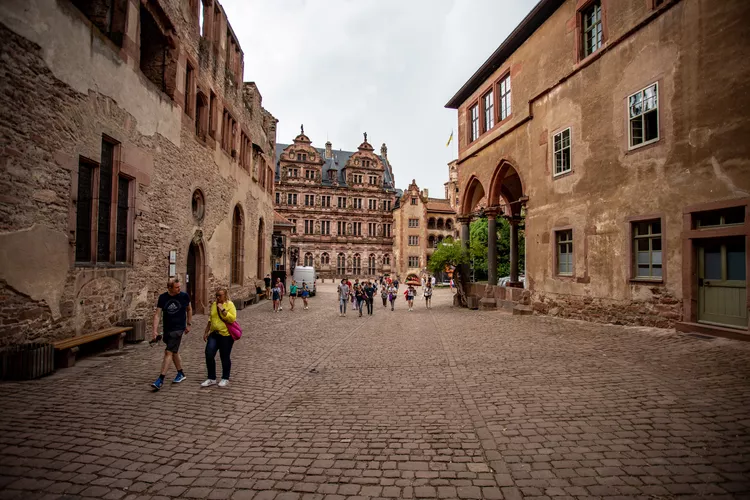Overview of Western Germany’s Top Destinations
Overview of the most popular cities and sights in the west of Germany; just scroll down to find more information about the different travel destinations in Germany.
- Frankfurt:
Located in the federal state of Hesse in the heart of Germany, Frankfurt is the financial center of the country. Thanks to its International Airport, one of the busiest in the world, it serves as the gateway to Europe for many travelers. As a diverse city, Frankfurt hosts many important events, including the International Book Fair in October, the largest of its kind in the world. - Heidelberg:
This charming city, one of the few in Germany that were not destroyed in World War II, is renowned for its old-world charm. The narrow cobblestone streets of its Old Town were the heart of Germany’s romantic period. The ruins of the once-grand Heidelberg Castle, the country’s oldest university, and the picturesque river valley contribute to the city’s appeal as one of the most scenic destinations in Germany. - Cologne:
Founded by Romans in 38 BC, Cologne is one of Germany’s oldest cities, located on the banks of the Rhine River. The centerpiece of Cologne is the magnificent Cathedral of Cologne, a remarkable architectural masterpiece. The city is also famous for its vibrant contemporary art scene, excellent museums, and lively carnival celebrations. - Düsseldorf:
As the capital of North Rhine-Westphalia, Düsseldorf is known for its blend of old and new, from traditional breweries to innovative architecture by renowned designers like Gehry and Chipperfield. The city’s luxury shopping boulevard, Königsallee, is a major attraction, and it hosts the world’s largest fashion trade fair each year. - German Wine Road:
The German Wine Road in Rhineland-Palatinate is the country’s oldest scenic drive. Stretching 50 miles from the southwest of Germany to the French border, this route winds through the country’s second largest wine-growing region. It offers opportunities to enjoy 1000-year-old viniculture in quaint villages, old-world restaurants, colorful vineyards, and local harvest festivals. - Rhine River Valley:
The Upper Middle Rhine Valley, a UNESCO World Heritage site, features a breathtaking landscape stretching 40 miles from Bingen to Koblenz. For a memorable road trip, follow the winding roads through terraced vineyards while admiring steep hills dotted with castles. Key highlights of the region include Bacharach, one of the best-preserved medieval towns, and the impressive Lorelei, a slate rock that rises nearly 400 feet above the Rhine. - Trier:
On the banks of the Moselle River lies Trier, Germany’s oldest city, founded as a Roman colony in 16 B.C. It became a favored residence for several Roman emperors. The evidence of Roman heritage is vividly present in Trier, with notable attractions such as the Porta Nigra, the largest Roman city gate north of the Alps, and the Cathedral of Trier, which houses a revered relic, the Holy Robe, believed to have been worn by Jesus during his crucifixion. - Mainz:
Located in southwest Germany, Mainz is the state capital of Rhineland-Palatinate and is celebrated as the birthplace of Johannes Gutenberg, who transformed communication with his invention of the moveable type printing press in the 15th century. The city is also home to the 1000-year-old Roman Catholic Cathedral of Mainz, an important example of Romanesque architecture along the Rhine. - Nürburgring:
Situated 90 km southwest of Cologne, the Nürburgring is Germany’s most renowned racetrack, established in 1927 and considered the toughest Grand Prix circuit globally. Home to the Formula 1 World Championships, fans have opportunities to experience the thrill of racing firsthand, whether by driving laps in their own vehicles, taking a speedy BMW Ring Taxi, or attending interactive exhibitions. - Speyer:
Located along the Rhine River, Speyer is famous for its Imperial Cathedral from the 11th century, regarded as one of Germany’s largest and most significant religious structures. The cathedral’s crypt contains the tombs of eight German emperors and kings, making it a vital historical site.




